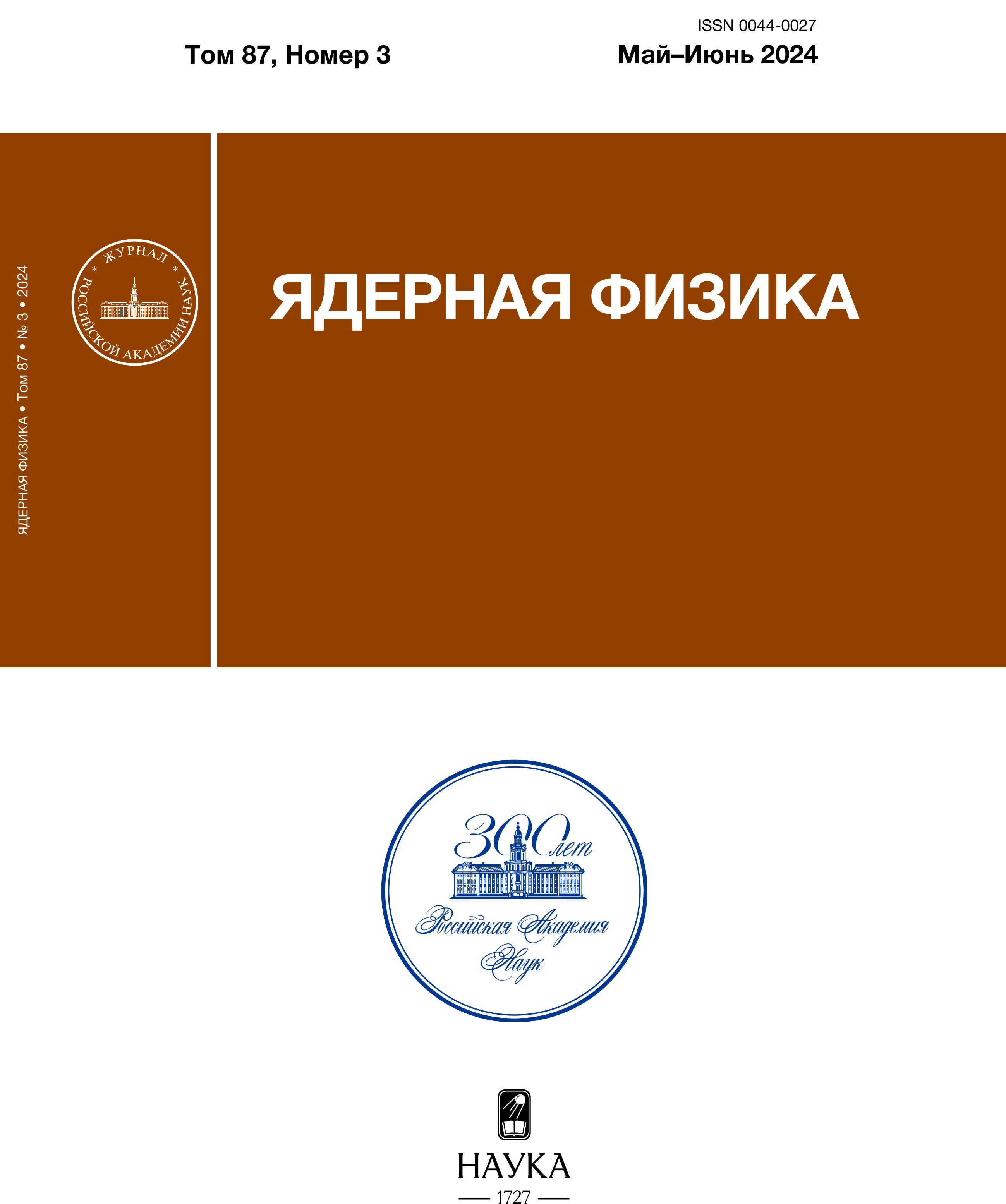KINEMATIC DESCRIPTION OF ALIGNMENT EFFECT IN COSMIC RAYS
- Autores: Lokhtin I.P.1, Nikolskii A.V.2, Snigirev A.M.1,2
-
Afiliações:
- Skobeltsyn Institute of Nuclear Physics, Lomonosov Moscow State University
- JINR
- Edição: Volume 87, Nº 3 (2024)
- Páginas: 182-190
- Seção: ЭЛЕМЕНТАРНЫЕ ЧАСТИЦЫ И ПОЛЯ. Эксперимент
- ##submission.datePublished##: 15.06.2024
- URL: https://cardiosomatics.ru/0044-0027/article/view/674726
- DOI: https://doi.org/10.31857/S0044002724030079
- EDN: https://elibrary.ru/IWNAZG
- ID: 674726
Citar
Texto integral
Resumo
The important role of kinematic constraints for the origin of the alignment of hadron and photon families observed by the Pamir collaboration in emulsion experiments with cosmic rays is discussed. Within the framework of the suggested approach it is shown that the high degree of alignment of the interaction products of the target nuclei and cosmic rays can be a consequence of the selection procedure of the most energetic clusters of particles together with the law of conservation of transverse momentum. The obtained results correctly describe the experimental data for three energetic centers and are also close enough to the measurements in the case of four and five clusters, which indicates encouraging prospects for the proposed method of explaining the alignment phenomenon.
Sobre autores
I. Lokhtin
Skobeltsyn Institute of Nuclear Physics, Lomonosov Moscow State University
Email: igor.lokhtin@cern.ch
Moscow, Russia
A. Nikolskii
JINR
Email: alexn@theor.jinr.ru
Bogoliubov Laboratory of Theoretical Physics Dubna, Russia
A. Snigirev
Skobeltsyn Institute of Nuclear Physics, Lomonosov Moscow State University; JINR
Email: snig@mail.cern.ch
Bogoliubov Laboratory of Theoretical Physics Moscow, Russia; Dubna, Russia
Bibliografia
- Pamir Collab. (A. Borisov et al.), in Proceedings of the 4th International Symposium on Very High Energy Cosmic Ray Interactions, Beijing, Ed. by D. Linkai (1986), p. 4.
- Pamir Collab., in Proceedings of the 21st International Cosmic Ray Conference, Adelaide, Australia, 1989, Ed. by R. J. Protheroe (Univ. of Adelaide, Australia,1990), p. 227.
- S. A. Slavatinsky, in Proceedings of the 5th International Symposium on Very High Energy Cosmic Ray Interactions, Lodz, Poland, 1988, Ed. by M. Giler (Univ. of Lodz, Poland, 1989), p. 90.
- Сотрудничество “Памир” (Л. Т. Барадзей и др.), Изв. АН СССР. Сер. физ. 50, 2125 (1986).
- J. N. Capdevielle, J. Phys. G 14, 503 (1988).
- V. V. Kopenkin, A. K. Managadze, I. V. Rakobolskaya, and T. M. Roganova, Phys. Rev. D 52, 2766 (1995).
- F. Halzen and D. A. Morris, Phys. Rev. D 42, 1435 (1990).
- В. В. Копенкин, А. К. Манагадзе, И. В. Ракобольская, Т. М. Роганова, Изв. РАН. Сер. физ. 58, 13 (1994).
- В. И. Галкин, А. К. Манагадзе, В. И. Оседло, Т. М. Роганова, Г. Шозиёев, Вестн. Моск. ун-та. Сер. 3. Физ. Астрон., № 6, 34 (2003).
- R. A. Mukhamedshin, JHEP 0505, 049 (2005).
- I. P. Lokhtin, A. K. Managadze, L. I. Sarycheva, and M. Snigirev, Eur. Phys. J. C 44, 51 (2005).
- A. De Roeck, I. P. Lokhtin, A. K. Managadze, L. I. Sarycheva, and A. M. Snigirev, in Proceeding of the 13th International Conference on Elastic and Diffractive Scattering (Blois Workshop) Moving Forward into the LHC Era, CERN, Geneva, Switzerland, 2009, Ed. by M. Deile, D. d’Enterria, and A. De Roeck (Verlag Deutsches Elektronen-Synchrotron, DESY, Hamburg, 2010), p. 308; arXiv: 1002.3527 [hep-ph].
- PHOBOS Collab., Phys. Rev. C 81, 024804 (2010).
- CMS Collab. (V. Khachatryan et al.), JHEP 1009, 091 (2010).
- R. A. Mukhamedshin, Eur. Phys. J. C 60, 345 (2009).
- И. П. Лохтин, А. К. Манагадзе, А. М. Снигирев, ЯФ 76, 645 (2013) [Phys. At. Nucl. 76, 602 (2013)].
- I.P. Lokhtin, A.K. Managadze, A.M. Snigirev, Phys. Atom. Nucl. 76, 602 (2013)
- G. Eyyubova, V. L. Korotkikh, I. P. Lokhtin, S. V. Petrushanko, A. M. Snigirev, L. V. Bravina, and E. E. Zabrodin, Phys. Rev. C 91, 064907 (2015).
- R. A. Mukhamedshin, Eur. Phys. J. C 82, 155 (2022).
- I. P. Lokhtin, A. V. Nikolskii, and A. M. Snigirev, Eur. Phys. J. C 83, 324 (2023).
- T. Sjostrand, Comput. Phys. Commun. 135, 238 (2001).
- I. P. Lokhtin et al., Comput. Phys. Commun. 180, 779 (2009).
Arquivos suplementares










